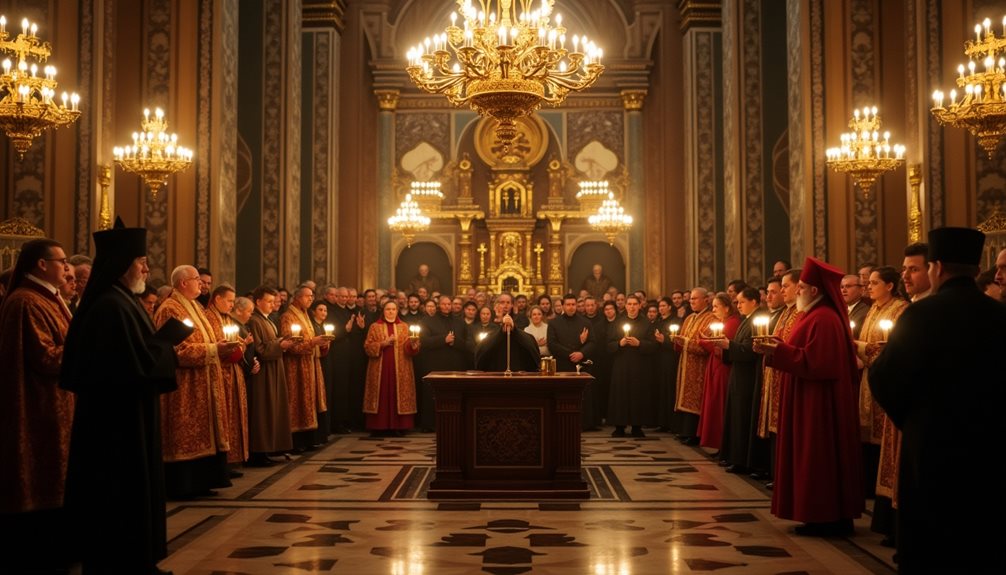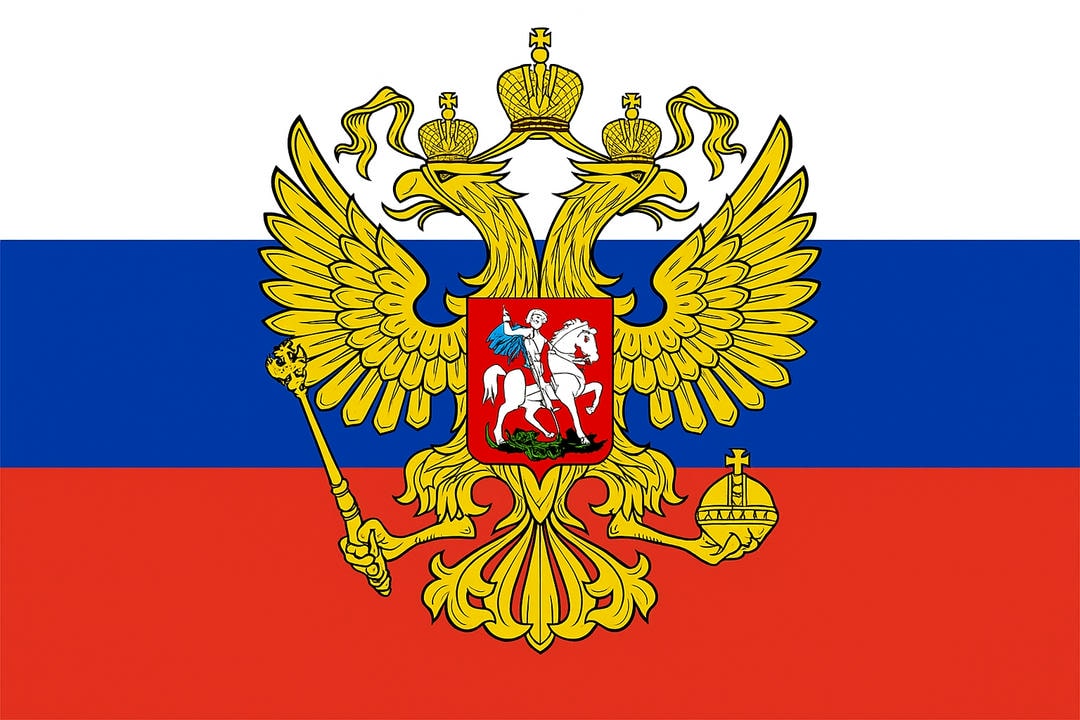The evolution of the Russian Cyrillic alphabet is a fascinating journey that begins in the 9th century with the pioneering work of Saints Cyril and Methodius. Originally developed to facilitate the spread of Christianity among the Slavic peoples, their Glagolitic script ultimately gave way to the more streamlined Cyrillic script in the 10th century, under the auspices of the Bulgarian Empire. As centuries passed, particularly under the reign of Peter the Great, significant reforms were introduced that modernized the alphabet. This transformation paved the way for the Cyrillic script’s enduring legacy and its numerous adaptations across different eras and regions. But what specific reforms did Peter the Great implement, and how did they impact the Cyrillic script’s role in Russian society?
Origins and Early Development

The origins and early development of the Russian Cyrillic alphabet can be traced back to the 9th century during the Christianization of the Slavic peoples. This period marked a significant transformation, as the adoption of Christianity necessitated a written form to translate religious texts, thereby fostering literacy and cultural unity.
The Cyrillic script emerged as a tool of liberation and enlightenment, enabling the Slavs to gain access to the rich tapestry of religious and philosophical writings previously beyond their reach.
Watch our conversational video on the History of the Cyrillic Alphabet
Central to this development was the adaptation of Greek and Glagolitic scripts to suit the phonetic needs of the Slavic language. This new alphabet was meticulously crafted to reflect the distinct sounds and nuances of the Slavic tongue, ensuring that the written word could accurately convey the spoken language.
As a result, the Cyrillic script became an instrument of intellectual and spiritual emancipation, breaking the chains of linguistic isolation.
In its nascent stages, the Cyrillic alphabet underwent continuous refinement and standardization. These early efforts laid the groundwork for its eventual role as a cornerstone of Slavic identity and cultural heritage, embodying the quest for knowledge and self-determination.
Influence of Saints Cyril and Methodius
Integral to the early development and refinement of the Cyrillic alphabet was the influence of Saints Cyril and Methodius, two Byzantine brothers whose missionary work among the Slavs in the 9th century left an indelible mark on the linguistic and cultural landscape. Their primary mission was to evangelize the Slavic peoples, and they recognized the necessity of a written language to facilitate religious and cultural education.
Saints Cyril and Methodius are credited with creating the Glagolitic script, an antecedent to the Cyrillic alphabet, to transcribe the liturgical texts into the Old Church Slavonic language. This initiative not only helped in spreading Christianity but also in preserving the Slavic linguistic heritage. Their work laid the foundation for the Cyrillic script, which would later be developed and refined by their disciples.
The significance of Cyril and Methodius’ contribution extends beyond religious texts; it empowered the Slavic people with a written form of their language, fostering literacy and cultural identity.
Transition From Glagolitic Script

Often considered a pivotal moment in the evolution of Slavic written language, the shift from the Glagolitic script to the Cyrillic alphabet marked a significant advancement in scriptural development.
The Glagolitic script, created by Saints Cyril and Methodius in the 9th century, was initially designed to transcribe Old Church Slavonic. However, its complex and ornate characters proved cumbersome for widespread use.
The change to the Cyrillic alphabet, which emerged in the 10th century, represented a strategic simplification and adaptation. Cyrillic, developed by the disciples of Cyril and Methodius, drew inspiration from the Greek uncial script and incorporated elements of local Slavic dialects. This new script was more accessible and easier to learn, facilitating broader literacy and communication among Slavic peoples.
The adoption of Cyrillic was accelerated by its official endorsement by the Bulgarian Empire, which sought to unify its diverse populace under a single, cohesive script. This change allowed for more effective administration and cultural cohesion, promoting a sense of shared identity and linguistic freedom.
Additionally, the Cyrillic alphabet’s adaptability guaranteed its longevity, enabling it to evolve with the changing linguistic and cultural landscapes of the Slavic world.

Peter the Great’s Reforms
Building upon the foundational establishment of the Cyrillic alphabet, significant further developments occurred during the reign of Peter the Great in the early 18th century. Recognizing the need for modernization and greater alignment with Western Europe, Peter instituted sweeping reforms that extended to the domain of language and script. His vision was rooted in pragmatism, seeking to enhance communication, education, and administrative efficiency.
In 1708, Peter the Great introduced a simplified version of the Cyrillic script known as the “civil script” or “grazhdanka.” This reform primarily targeted the elimination of superfluous characters and the standardization of letterforms, which facilitated easier printing and literacy. By streamlining the alphabet, Peter aimed to reduce the complexities associated with the traditional script, thereby making it more accessible to a broader populace.
Additionally, Peter’s reforms included the introduction of Western-style punctuation and the incorporation of new typefaces inspired by Latin script. This not only modernized the visual presentation of the written Russian language but also fostered an environment conducive to intellectual and cultural exchange.
Peter the Great’s initiatives were instrumental in bridging the gap between Russia and the West, laying the groundwork for an era of enlightenment and progress that resonated with a society yearning for knowledge and freedom.
Modern Adaptations and Usage

The 20th and 21st centuries have witnessed significant adaptations and modern usage of the Russian Cyrillic alphabet, reflecting the dynamic nature of language evolution. The Soviet era brought about standardized reforms that aimed at simplifying and unifying the script to bolster mass literacy and support the ideological framework of the state. These adjustments included the removal of archaic letters and the introduction of new orthographic rules, which streamlined written communication.
In the post-Soviet era, the Russian Cyrillic alphabet has continued to evolve, influenced by globalization and technological advancements. The digital age necessitated the inclusion of Cyrillic in Unicode, enabling seamless integration into global communication networks. This development has been essential for ensuring that Russian speakers can freely express themselves in digital spaces without the constraints of transliteration.
Modern adaptations also extend to creative fields such as branding and design, where Cyrillic characters are stylized to convey contemporary aesthetics. Additionally, the alphabet has been adapted to accommodate minority languages within the Russian Federation, promoting linguistic diversity and cultural expression.
These ongoing modifications underscore the adaptability of the Russian Cyrillic alphabet, ensuring its relevance in an ever-changing world.




